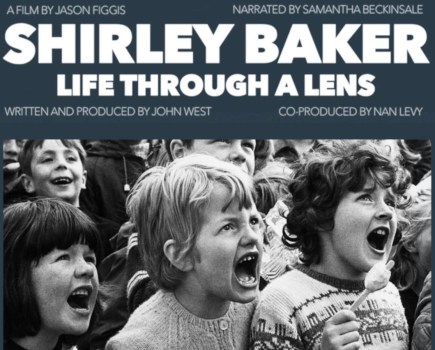Photo Insight with David Ward – Cradle Mountain-Lake

David Ward is one of the UK’s finest landscape photographers. With more than 20 years’ experience in large-format photography, he has photographed extensively throughout the UK and in countries such as Canada, Iceland, Norway and France. He has also led workshops for Light & Land. David has written two books on his photographic philosophy called Landscape Within and Landscape Beyond. Each month, he will discuss the story
behind one of his fantastic landscape photographs
This is another shot from Cradle Mountain-Lake St Clair National Park in Tasmania (see AP 27 July). I got up at dawn to shoot at Dove Lake, which lies at the base of Cradle Mountain, and I spent two or three hours watching the sun come up. As I started to head back for breakfast, I passed this area of button-grass moorlands that the sun was just starting to strike. It had rained a lot the previous afternoon, and this caused the mist to start to rise in the background. I had been really keen to photograph the button grass anyway because these tussocks have fantastic sculptural shapes, so I quickly set up the tripod and made this image.
I think the best way to photograph these tussocks is into the light, otherwise you won’t get this sculptural effect. If you shoot with the light you won’t see them as these lovely hemisphere shapes – it’s the initial area of shade and then the backlight on the tops that give you these nice shapes through the image. I wanted this photograph to be stripped down and graphic.
This was really an attempt to photograph something that was ‘of its environment’. Button grass is very important in the ecology of these uplands, with an ongoing cycle between the eucalyptus trees and the button grass. It’s also a very important habitat for all sorts of invertebrates, and copperhead snakes are very common to the area. I was completely unaware that the area was infested with (venomous!) snakes until I walked home post-shoot and there was a dead one by the side of the road. I spoke to someone at my accommodation later, who said, ‘Oh yeah. It’s full of snakes!’
I suppose in an image like this, the key is balancing complexity and simplicity. You’ve got the strong form in the foreground, which acts as a kind of anchor for the image, and then as your eye travels up through the frame it becomes more complex. The mood changes, and the air of mystery deepens. It was one of those moments – the mist rolled in and it just felt magical because of the way it changed the whole atmosphere of the place. If I’d shot it in the late afternoon, it would have been flatly lit and there would have been no picture at all. That’s about reacting to the time and the place.

I wanted to get the maximum amount of detail in the background, so I needed a large depth of field. I used some movement to achieve this, although it’s not necessarily apparent that I have done so. I used just a tiny bit of forward tilt to give me that larger depth of field. I used a shutter speed of 1/8sec, as the mist wasn’t moving particularly fast, and I took two frames. This was the more successful one because there was mist across all the background, apart from in the dark central portion where the trees are.
I liked the imperfect, disordered nature of the row of trees. I’ve done the classic photographer’s thing of making sure they don’t touch the edges of the frame, and this happened to work really well compositionally with the clump of button grass in the foreground. I chose that particular clump partly because I liked its relationship with the background and also because it was kind of an outlier. In the other rows of grass they were all very much grouped together, but this particular one stood apart and was very easy to make into a solitary, graphic image. Besides, I couldn’t spend a lot of time wandering around looking because I was aware that the mist was probably going to burn off quite rapidly. I needed to get on with it. I looked at two or three different clumps, then very quickly settled on this one.
Although you may not think it, encountering this kind of time pressure is quite common in landscape photography. You may have to account for wind, rain, a change in light or in atmospheric conditions. There’s usually something going on to make a situation time-sensitive. Even when shooting something like a rock detail, your perfect light might be bouncing off a cloud and, when that cloud moves, your whole situation will change.
You’re always working in a dynamic environment, with many factors that aren’t under your control. You can’t dictate where the cloud is, or where the mist is, or where the light is. While these days you can adjust things afterwards in Photoshop, I grew up in the film era and therefore for me it’s about trying to get it right at the right moment, and I take what is probably a quite ridiculous amount of pride in doing so. It’s simply because I didn’t have any choice in the first 15 years I was working. It’s an element of craft: some are perfectly happy to apply their craft through editing, while other people, like me, try to get it right in the moment, to walk that tightrope. Is one better than the other? No, they’re just different.
David Ward was talking to Jon Stapley
To see more of David’s images or to book a place on one of his workshops, visit www.into-the-light.com







